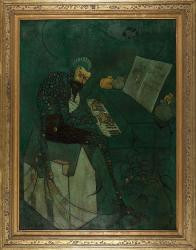Tess Porter
I'm the former User Experience Strategist at the Smithsonian Office of Educational Technology. Here, I focused on the use of digital museum resources to support teaching and learning. My work draws on my experience as a museum educator, digital analyst, usability researcher, and content designer. I hold a B.A. in Anthropology and a B.A. in Art History from University Colorado Boulder, and an M.S. in Museums and Digital Culture with an Advanced Certificate in User Experience from Pratt Institute.
Tess Porter's collections
American Ingenuity, Innovation, and Enterprise: Renwick Gallery Seminar Resources
 Tess Porter
Tess Porter
American Ingenuity, Innovation, and Enterprise: Opening Seminar Resources
 Tess Porter
Tess Porter
Compare and Contrast: Personal Perspectives in Portraiture
 Tess Porter
Tess Porter
Minnesota: Investigating a Place
 Tess Porter
Tess Porter
The Classical Origin of Iconic American Symbols
 Tess Porter
Tess Porter
Shoes: Exploring Culture, History, Place, and Innovation
 Tess Porter
Tess Porter
Symbolism, Story, and Art: Achelous & Hercules
 Tess Porter
Tess Porter
Looking at Ancient Civilization through Objects
 Tess Porter
Tess Porter
New Orleans & Place
 Tess Porter
Tess Porter
Homo floresiensis: Teaching Resources
 Tess Porter
Tess Porter
Pittsburgh & Place
 Tess Porter
Tess Porter
Lalibela, Ethiopia: Teaching Resources
 Tess Porter
Tess Porter








